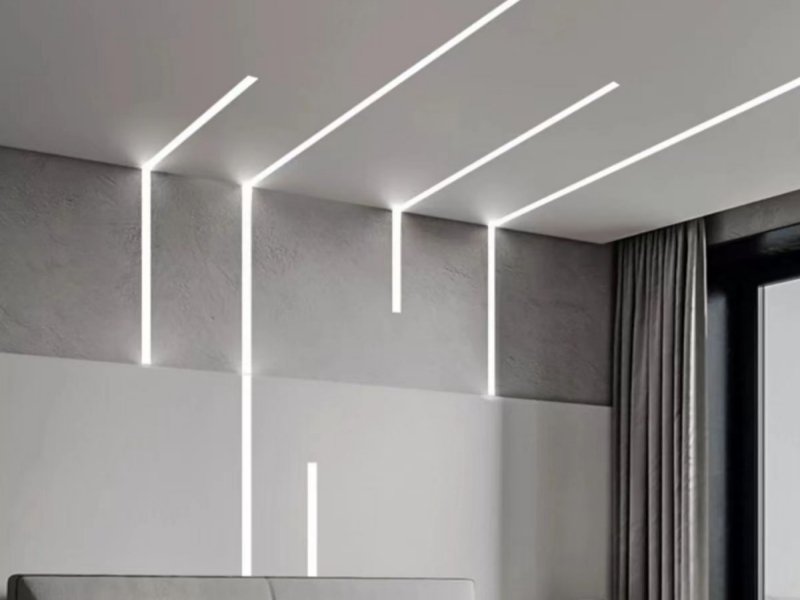Introduction
In the world of lighting and design, LED channels have become a fundamental element for achieving aesthetic, functional, and energy-efficient illumination. These innovative tools allow for a seamless integration of LED strips into various environments, creating captivating lighting effects and providing essential structural support. In this article, we will delve into the realm of LED channels, exploring their definition, applications, and some of the best options available.
1.What is a LED Channel?
To understand the significance of LED channels, it’s essential to grasp their basic concept. A LED channel, also known as an LED profile or LED extrusion, is a specially designed enclosure that houses LED strips, providing protection and support while also controlling the direction and dispersion of light. These channels come in a variety of shapes and sizes, allowing for customization to suit the specific needs of a lighting project.
LED channels serve several key functions:
1.1. Protection: LED strips are delicate and can be easily damaged. LED channels shield them from physical harm, extending their lifespan.
1.2. Heat Dissipation: LEDs generate heat during operation, and proper channels help dissipate this heat, preventing overheating and ensuring consistent performance.
1.3. Aesthetics: LED channels conceal the LED strips while allowing light to emit through diffusers, creating a clean and polished appearance.
1.4. Diffusion and Direction: These channels often incorporate diffusers, which scatter the light and provide control over its direction, ensuring even and pleasing illumination.

2.How Do You Use a LED Channel?
Now that we understand what aluminum LED channels are, let’s explore how they are used and the advantages they offer:
2.1. Residential Lighting
In home lighting design, LED strip channels have become increasingly popular. They can be incorporated into various spaces, such as kitchens, living rooms, and bedrooms, to create ambient, task, or accent lighting. For example, under-cabinet LED channel diffuser provides a sleek and functional solution for kitchen countertop illumination. They not only enhance the visual appeal of the space but also improve task visibility.
2.2. Commercial and Retail Applications
LED channels find extensive use in commercial and retail settings. They are employed to highlight merchandise, accentuate architectural features, and create engaging environments for customers. Suspended LED channels, for instance, can be used to draw attention to specific products in a retail store, elevating the shopping experience.
2.3. Architectural Lighting
Architects and designers often turn to LED channels to integrate lighting seamlessly into architectural elements. Recessed LED channels can be embedded into ceilings or walls, delivering a clean and unobtrusive look. These channels offer flexibility in terms of color temperature and intensity, allowing for various moods and atmospheres within a space.
2.4. Outdoor and Landscape Lighting
LED diffuser channels are not limited to indoor applications. They are also used in outdoor and landscape lighting projects. Weather-resistant LED channels provide a reliable way to illuminate pathways, gardens, and outdoor seating areas, enhancing safety and aesthetics.

- The Best LED Channels
With an array of LED channels available in the market, it’s essential to choose the right one for your project. Here are some of the best LED channels that have gained popularity for their quality and versatility:
3.1. Aluminum LED Channels
Aluminum LED channels are favored for their durability and heat dissipation properties. They are available in various shapes, including flat, round, and corner profiles, making them suitable for a wide range of applications. These channels often feature a frosted diffuser, which creates a uniform glow and minimizes glare.
3.2. Plaster-in LED Channels
Plaster-in LED channels are designed to be seamlessly integrated into drywall or plaster, providing a sleek and minimalist look. They are perfect for modern and upscale interior designs, where the goal is to create a seamless and unobtrusive lighting effect.
3.3. Surface-Mount LED Channels
Surface-mount LED channels are versatile and easy to install. They can be affixed to any surface, making them ideal for retrofit projects. These channels are available in various styles, including square and rectangular options, and can be used to provide both ambient and accent lighting.
3.4. Flexible LED Channels
For applications that require curved or irregular shapes, flexible LED channels are the go-to choice. These channels can be bent to match the contours of a specific space, allowing for creative and unique lighting designs.

Conclusion
LED channels have revolutionized the world of lighting by offering a versatile and efficient way to integrate LED strips into various environments. They provide protection, heat dissipation, and control over the direction of light, making them an essential component of modern lighting design. Whether for residential, commercial, architectural, or outdoor applications, LED channels offer a myriad of possibilities for enhancing aesthetics and functionality. When selecting the best LED channel for your project, consider factors like the environment, aesthetics, and ease of installation to achieve the desired lighting effect. With the right LED channels, you can illuminate spaces in a way that is both functional and visually stunning.












Leave A Comment